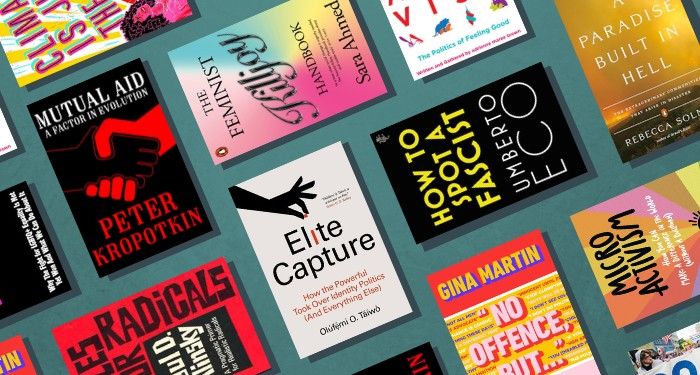This content contains affiliate links. When you buy through these links, we may earn an affiliate commission.
We’re living through an age of rising authoritarianism and fascism, where we need to build a strong resistance to survive it. Getting involved in the fight for justice is important, and there’s a role for everyone, whether you thrive at a march, are great at online engagement, or have a knack for developing mutual aid networks in your community. Sometimes, though, it can be difficult to know where to jump in. The thought of getting involved in a movement can be overwhelming; you might not be sure where you can start, who to approach, or how to begin your activist journey.
Luckily, many people have been in the same place before and have written books that can help point the way for others. There are plenty of options out there for people who want to gain an understanding of the context and history of resistance, including famous texts that have formed the foundation for many movements. There are literal handbooks, written by people who have dedicated their lives to activism, which are full of invaluable advice for anyone wanting to get involved in present-day resistance. Wherever you live, whatever your circumstances, and whatever you feel you can bring to the resistance movement you’re drawn to, these books will help you find your way in the times to come.
Must-Read Classics


Mutual Aid: A Factor in Evolution by Peter Kropotkin
In this core anarchist text, Kropotkin pushes back on the concept of “survival of the fittest”, looking at the animal world and human history to trace the importance of working together. Kropotkin argues that mutual aid is essential for our survival and the only way that social justice can truly be achieved.
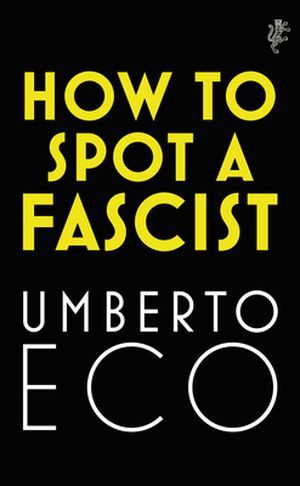

How to Spot a Fascist by Umberto Eco
Eco grew up during Mussolini-era Italy, seeing the rise of fascism first-hand. In current times, his work on the 14 characteristics of fascism is crucial for spotting its resurgence. Eco’s writings give us a framework on how to identify fascism in the present day and how to resist.
The Combahee River Collective Statement by the Combahee River Collective
The Combahee River Collective were a Black feminist lesbian socialist group based in Boston during the 1970s. Critiquing the failings of both the white second-wave feminist movement and the Civil Rights movement to consider the needs of and specific oppressions faced by Black women, the Combahee River Collective produced their Statement, one of the central Black feminist texts.
True Story
Sign up for True Story to receive nonfiction news, new releases, and must-read forthcoming titles.


If They Come in the Morning: Voices of Resistance, edited by Angela Y. Davis
Published in 1971, during Davis’s incarceration as a political prisoner, If They Come in the Morning collects writings from a huge number of Black radical voices on the US prison system. This collection is an essential read in a time where the power of the carceral state is growing within the current authoritarian regime.


Rules for Radicals: A Pragmatic Primer for Realistic Radicals by Saul D. Alinsky
Alinsky’s last book draws on his lifetime of activism, passing on his knowledge about community activism and how to bring different groups together to fight for rights and a better future. With sections on direct action, mobilisation and organisation, Rules for Radicals remains an important read for anyone wanting to make a difference.
Modern Theory
Outrage by Ellen Jones
Jones’s debut book takes a frank look at how LGBTQ+ rights are under threat both in the UK and the US. She explores the rollback of rights that have happened in recent years, and the ongoing discrimination that LGBTQ+ people face. She also gives advice on what people from all demographics can do to fight back.


Elite Capture by Olúfẹ́mi O. Táíwò
In this book, Táíwò explores how useful concepts, such as the identity politics originally outlined by the Combahee River Collective, have been subjected to “elite capture”—groups with social power taking the concepts out of context and using them for their own ends. Táíwò argues the need for radical solidarity across marginalised groups, and the importance of recognising elite capture when we see it.
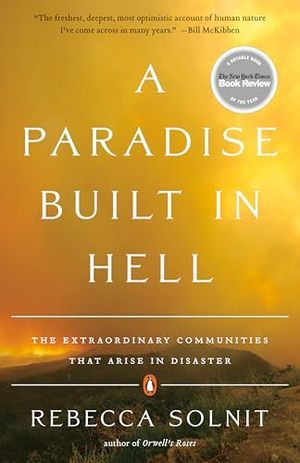

A Paradise Built in Hell by Rebecca Solnit
The time we’re living through is frightening, and sometimes it seems like there’s little light in the darkness. In A Paradise Built in Hell, Solnit looks at several other difficult points in human history and at the positive movements that developed at those times. If you’re feeling a sense of despair, A Paradise Built in Hell is a reminder that altruism and kindness thrive no matter how bad things become.


Climate is Just the Start by Mikaela Loach
It’s Not That Radical, Loach’s first book, explored the importance of climate activism as part of working towards a better future. Loach builds on this in her second book, using her own experience as a climate activist to show others how to participate and build in social and environmental justice movements. Aimed at young readers, Climate is Just the Start is an accessible and fascinating guide to getting involved.


Consumed by Aja Barber
In Consumed, sustainability champion Barber takes a microscope to the harms caused by the fast-fashion industry, and how this intersects with broader social inequalities. Consumed asks the reader to challenge their own prejudices and assumptions and shows a way to step back from consumerism and live a more ethical, sustainable life.
Practical Guides and Handbooks
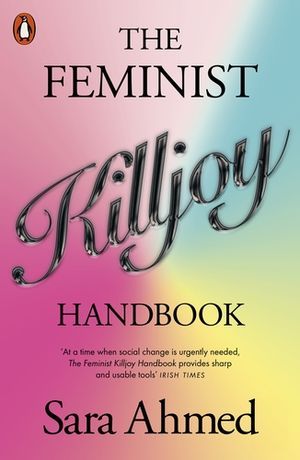

The Feminist Killjoy Handbook by Sara Ahmed
Ahmed has written extensively about the need to be a “killjoy” when practicing feminism—to challenge aggressions and pointing out inequalities. With The Feminist Killjoy Handbook, Ahmed gives crucial advice and context to activists and people working towards intersectional justice and equality.
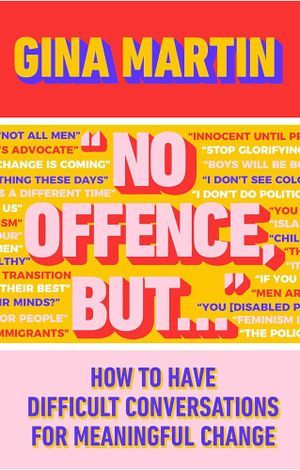

“No Offence, But…”: How to Have Difficult Conversations for Meaningful Change by Gina Martin
Activist Gina Martin successfully campaigned to make upskirting illegal in England and Wales, and her book, “No Offence, But…” gives guidance on how to have the kinds of awkward conversations that are necessary when working towards change. Martin’s book includes chapters from a variety of other activists, including Charlie Craggs, Aja Barber, Koa Beck and others.


Pleasure Activism: The Politics of Feeling Good by adrienne maree brown
Activist, author, and podcaster adrienne maree brown answers an important question with Pleasure Activism; how can we be activists without burning out or losing ourselves in the negative side of campaigning? Pleasure Activism offers guidance on how to find joy and healing through the activist work we do, rather than treating resistance as a chore.


Micro Activism by Omkari L. Williams
Getting involved in resistance movements can often seem overwhelming, especially for quieter people. Williams’s book offers advice on how to find your own way to contribute to the causes you care about, avoid burnout, and take actions that work both for you and for the wider movements you want to get involved with.
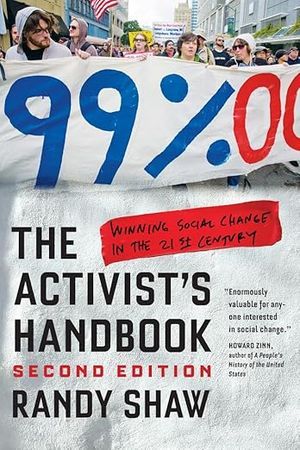

The Activist’s Handbook: Winning Social Change in the 21st Century by Randy Shaw
A revision of his earlier guide, Shaw’s updated The Activist’s Handbook teaches new activists how to fight for what’s right on many different fronts, from the streets to the internet. The Activist’s Handbook looks at ways to build community and make change.
Teen readers interested in making change can learn more from A Civic Education in YA. To stay informed, learn important discernment skills from How to Identify Credible Sources—A Skill More Crucial Than Ever and sign up for the Literary Activism newsletter.
The following comes to you from the Editorial Desk.
This week, we’re highlighting a post that had our Managing Editor Vanessa Diaz feeling a type of way. Now, even five years after it was published, Vanessa is still salty about American Dirt. Read on for an excerpt and become an All Access member to unlock the full post.
Picture it: The United States, January 2020. A book with a pretty blue and white cover is making the rounds on the bookish internet. The blue ink forms a beautiful hummingbird motif against a creamy background, a bird associated with the sun god Huitzilopochtli in Aztec mythology. Black barbed wire, at once delicate and menacing, cuts the pattern into a grid resembling an arrangement of Talavera tiles. The package is eye-catching, ostensibly Mexican in feel, and evocative of borders and the migrant experience.
The book tells the story of a bookstore owner in Acapulco, Mexico, who is forced to flee her home when a drug cartel murders everyone in her family except for her young son at a quinceañera. She and the boy are forced to become migrants and embark on a treacherous journey north to the U.S. border, evading the cartel and befriending fellow migrants along the way. The book is being lauded not just as the “it” book of the season but as the immigration story. It gets the Oprah treatment and is praised by everyone from Salma Hayek to the great Sandra Cisneros, who called it “the great novel of Las Américas.”
It’s been over five years, and this book is still the bane of my existence.
Sign up to become an All Access member for only $6/month and then click here to read the full, unlocked article. Level up your reading life with All Access membership and explore a full library of exclusive bonus content, including must-reads, deep dives, and reading challenge recommendations.

